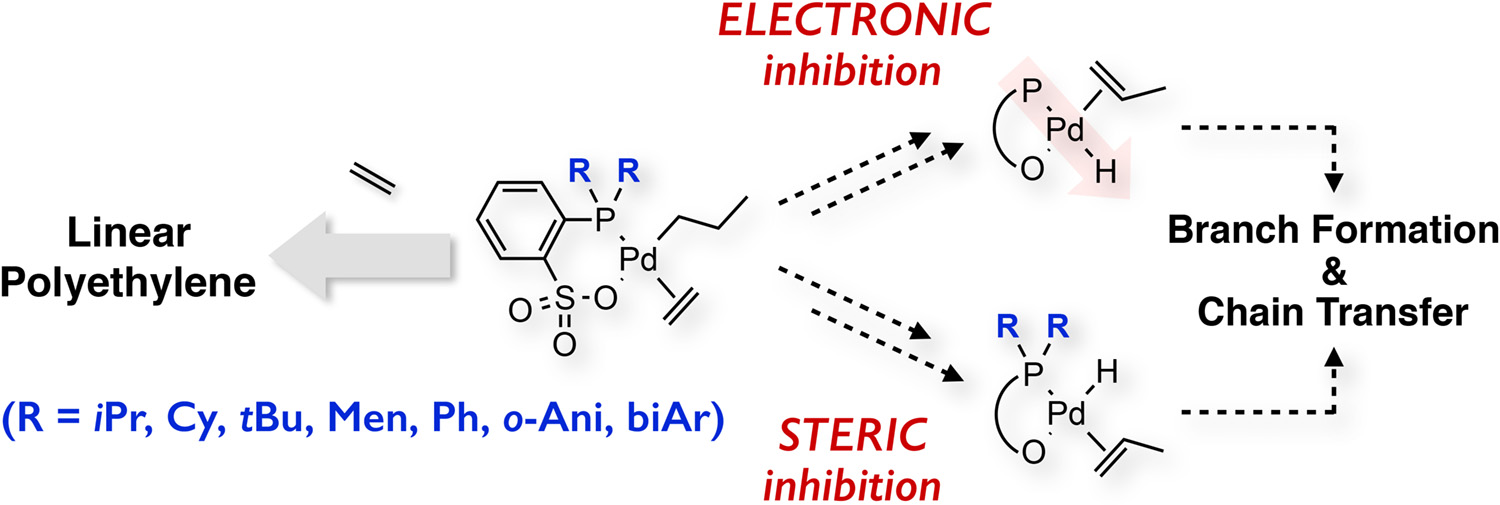R. Nakano, L. W. Chung, Y. Watanabe, Y. Okuno, Y. Okumura, S. Ito, K. Morokuma*, K. Nozaki*
ACS Catal. 2016, 6, 6101–6113. DOI: 10.1021/acscatal.6b00911
Abstract: The mechanism of linear polyethylene formation catalyzed by palladium/phosphine−sulfonate and the effect of the ligand structure on the catalytic performance, such as linearity and molecular weight of the polyethylene, were reinvestigated theoretically and experimentally. We used dispersion-corrected density functional theory (DFT-D3) to study the entire mechanism of polyethylene formation from (R2PC6H4SO3)PdMe(2,6-lutidine) (R = Me, t-Bu) and elucidated the key steps that determine the molecular weight and linearity of the polyethylene. The alkylpalladium ethylene complex is the key intermediate for both linear propagation and β-hydride elimination from the growing polymer chain. On the basis of the key species, the effects of substituents on the phosphorus atom (R = t-Bu, i-Pr, Cy, Men, Ph, 2-MeOC6H4, biAr) were further investigated theoretically to explain the experimental results in a comprehensive manner. Thus, the experimental trend of molecular weights of polyethylene could be correlated to the ΔΔG⧧ value between (i) the transition state of linear propagation and (ii) the transition state of the path for ethylene dissociation leading to β-hydride elimination. Moreover, the experimental behavior of the catalysts under varied ethylene pressure was well explained by our computation on the small set of key species elucidated from the entire mechanism. In our additional experimental investigations, [o-Ani2PC6H4SO3]PdH[P(t-Bu)3] catalyzed a hydrogen/deuterium exchange reaction between ethylene and MeOD. The deuterium incorporation from MeOD into the main chain of polyethylene, therefore, can be explained by the incorporation of deuterated ethylene formed by a small amount of Pd–H species. These insights into the palladium/phosphine−sulfonate system provide a comprehensive understanding of how the phosphine−sulfonate ligands function to produce linear polyethylene.

